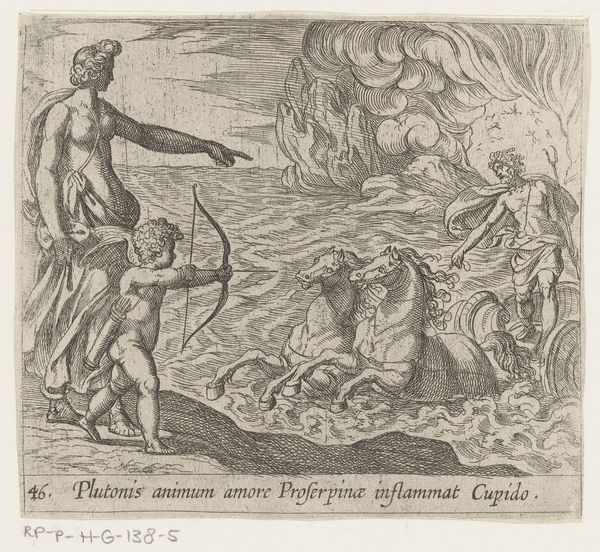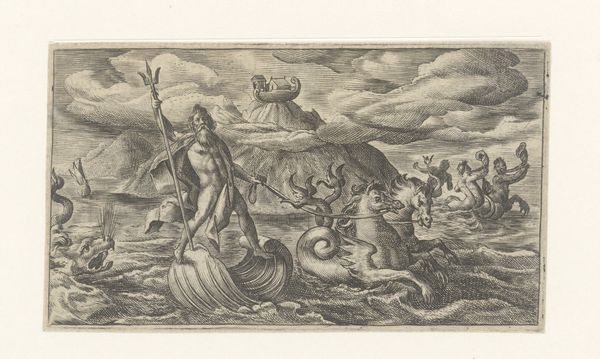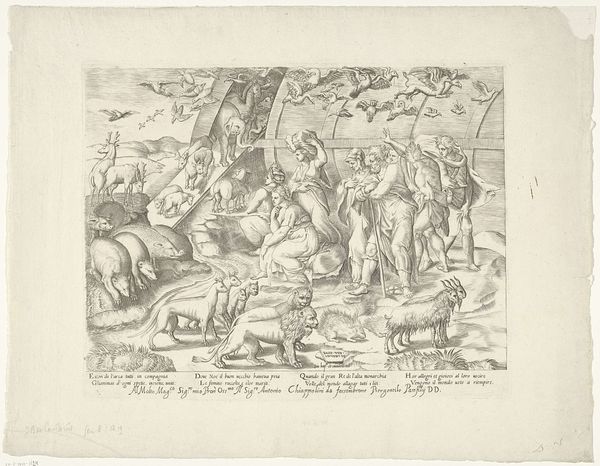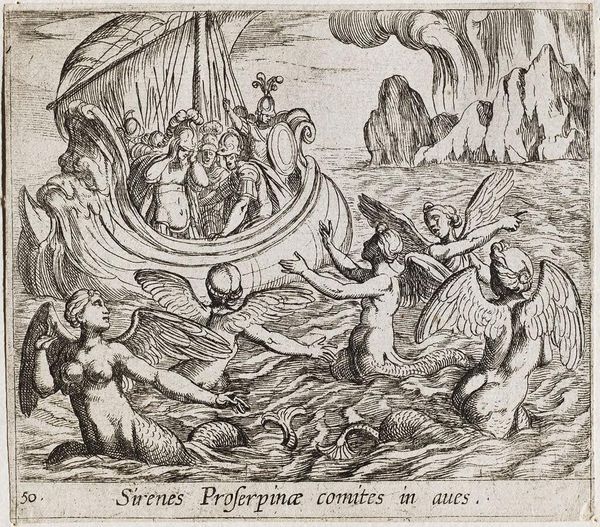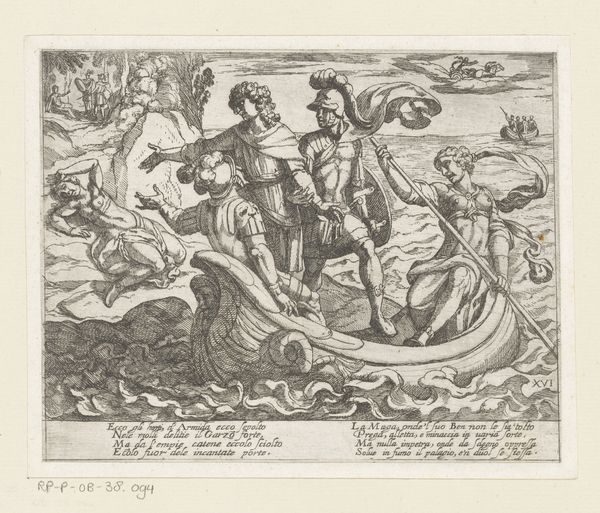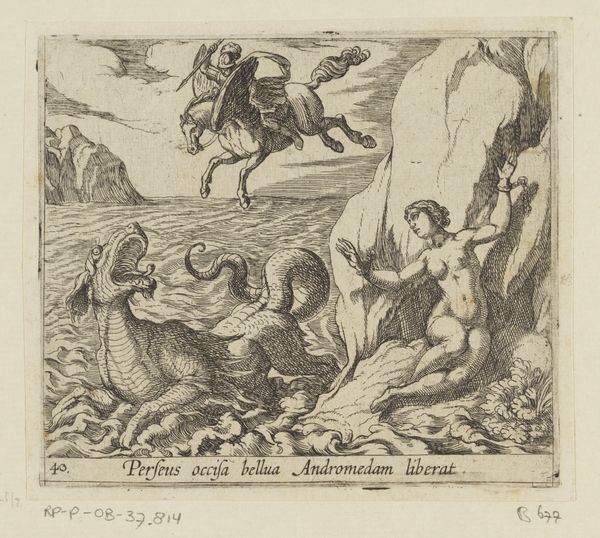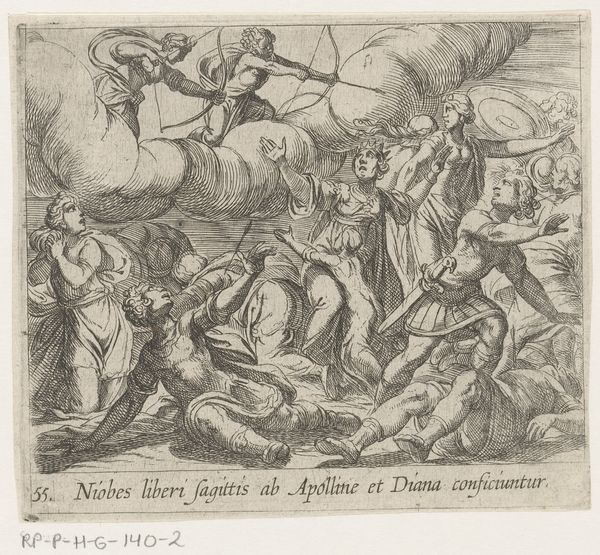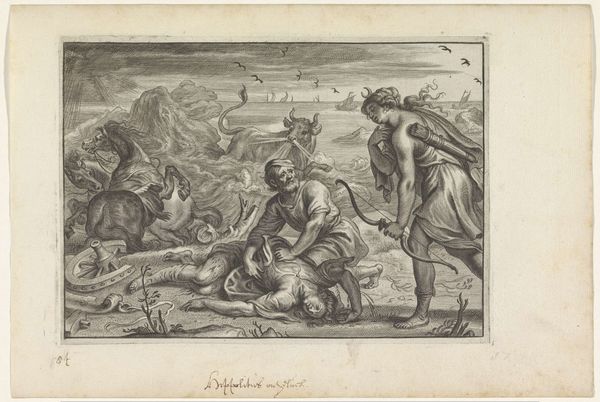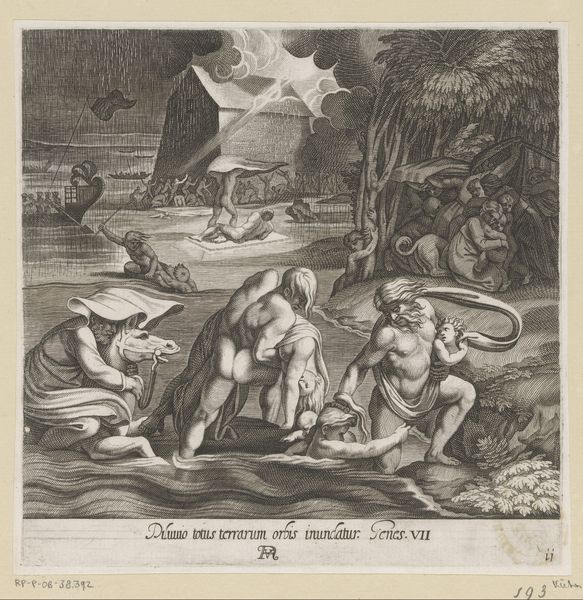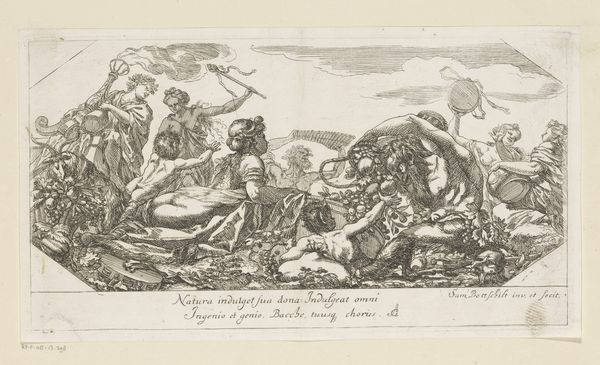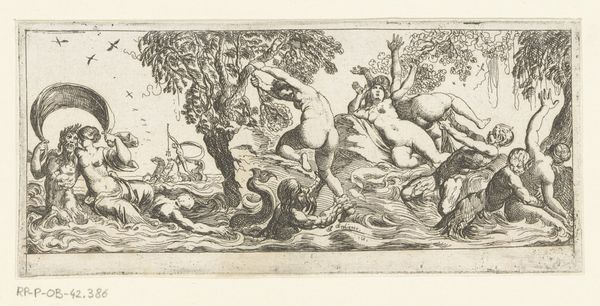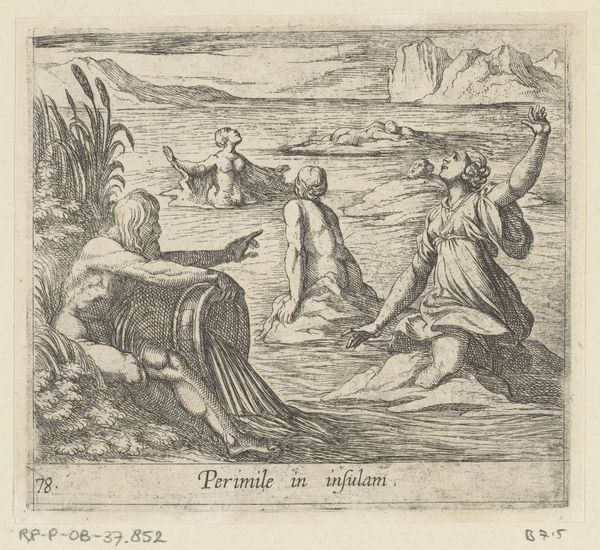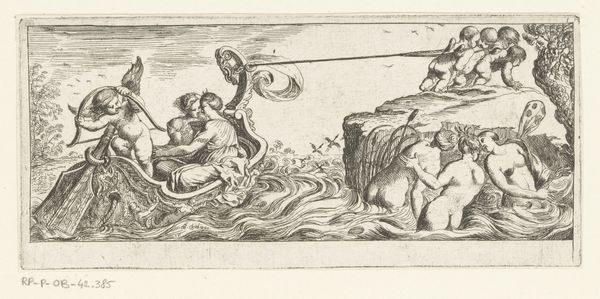
drawing, print, intaglio, paper, ink, engraving
#
drawing
#
narrative-art
#
baroque
#
pen drawing
# print
#
pen illustration
#
pen sketch
#
intaglio
#
figuration
#
paper
#
ink
#
line
#
pen work
#
genre-painting
#
engraving
Dimensions: height 104 mm, width 118 mm
Copyright: Rijks Museum: Open Domain
Curator: The artwork before us, "De Sirenen" or "The Sirens," attributed to Antonio Tempesta, was crafted between 1606 and 1638. It's an intaglio print rendered with ink on paper. Editor: It feels strangely ethereal, despite the sharp, almost frenetic linework. The composition, with its swirling water and ambiguous figures, creates a sense of unease. Curator: Precisely! Tempesta was renowned for his narrative scenes, often drawn from mythology and biblical stories, catering to a broad audience eager for accessible yet dramatic imagery. The Rijksmuseum has this displayed as an engraving, one of many readily produced prints disseminating visual stories. Editor: Look at the sirens themselves. They are neither fully bird nor fully woman but creatures caught between worlds. And the material suggests an interesting relationship with reproduction. Given it's a print, we have to consider the accessibility of the narrative it is purveying. Were such works popular and available only for an elite, literate consumer, or something more? Curator: Great question. Prints were, indeed, relatively accessible. While the elite certainly collected them, their affordability allowed for wider distribution amongst the growing merchant class, enabling these narratives and moral allegories to permeate further into society's consciousness. Consider the politics of Tempesta's choices: the tale of Odysseus and the Sirens—or perhaps another narrative with similarly deceptive mermaids—serves to reinforce themes of temptation, danger, and the need for vigilance in a rapidly changing world. Editor: The almost mass-produced quality brings an interesting tension to it, don’t you think? Are the makers–the labor involved–present in a way that informs the meaning itself, or is the artwork just a simple reproduction? The fineness of the lines suggest a degree of care, even craftsmanship that seems somewhat at odds with a mere reproducible aesthetic. Curator: That's a perspective worth noting. Tempesta’s skillful rendering transformed a readily reproducible medium into an expressive platform. Editor: This certainly reveals much about art’s societal impact and production during that period. I find myself contemplating how Tempesta's skills allowed for a tale about caution to be spread more easily amongst a burgeoning, watchful populace. Curator: I agree, understanding "De Sirenen" within its historical context, framed as part of its Baroque appeal, allows us to consider a multitude of readings, about its intended viewership and dissemination strategy.
Comments
No comments
Be the first to comment and join the conversation on the ultimate creative platform.
